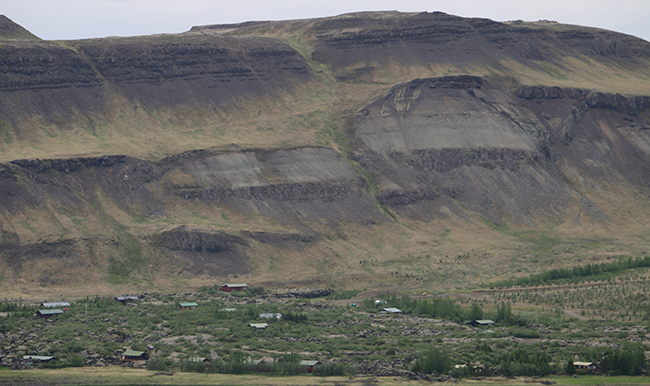Today, let’s journey to Iceland, to a bit northwest of Reykjavík. This is a view from the top of the Grábrók cinder cone, across the valley to the east.
With very few exceptions, Iceland is a big pile of basalt, and that shows through in the walls of this valley, which display a stack of basaltic lava flows, intercalated in places with pyroclastic debris or volcaniclastic sediment.
One portion of the far wall of the valley shows some discontinuities in the layering:

I had a satisfying few minutes puzzling over multiple working hypotheses for this observation. Is there a fault along that little green gully? How best to explain the highly inclined basalt layer to the right of that? What to make of the grayish granular pocket in the middle? (I’d be curious to hear your reactions, if you’d care to record them in the comments below.)
The valley appears to have glacial influence, on the basis of U-shaped “hanging valleys” that feed into it, but the bottoms is relatively flat, which may reflect a heavy sedimentary “backfiling” of the valley post-glaciation, as with the Yosemite Valley in California. A river runs through it today, with several channels that merge and bifurcate:
Take a look at the whole scene in this GigaPan. If you don’t have Flash enabled on your computer, you’ll have to click through to explore it:
Link 0.55 Gpx GigaPan by Callan Bentley
See if you can find: (a) the “fault” site I discussed above, (b) a hanging valley, (c) a river channel, (d) columnar jointing, and (e) an outcrop showing at least five sequential basalt flows.
